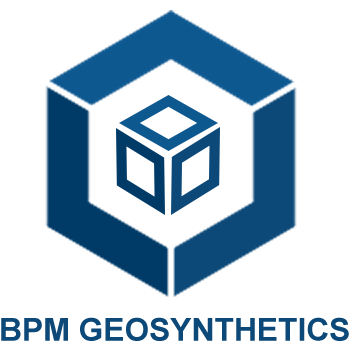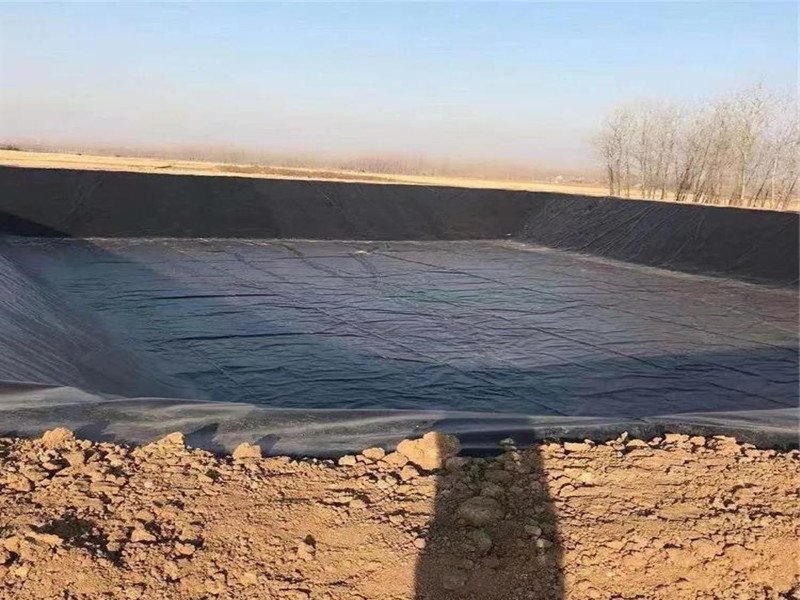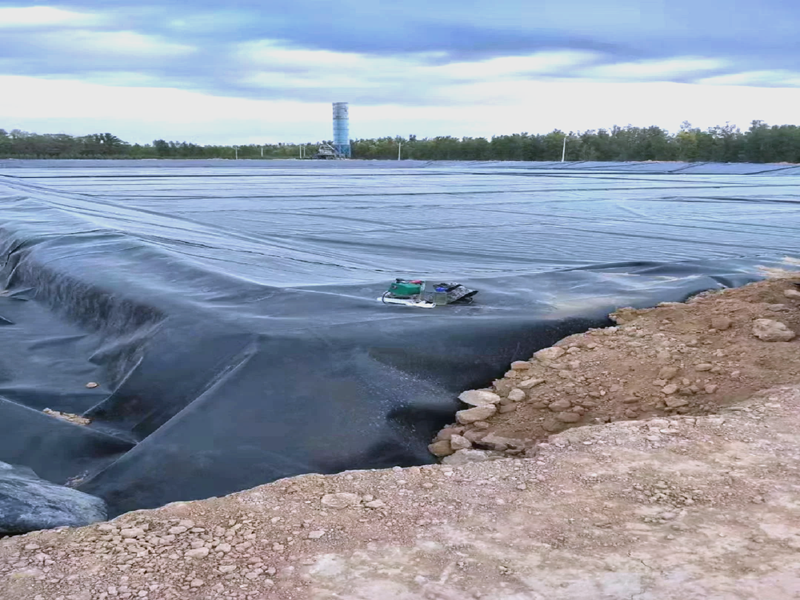As an important environmental protection material, geomembrane plays a vital role in the construction and operation of landfills. This article will deeply explore the characteristics, advantages and applications of geomembranes for landfills.
1.Characteristics of 60 Mil HDPE Liner for For Landfills
Landfill geomembranes are an anti-seepage material specially used in landfills, with the following significant characteristics:
1.1. Excellent anti-seepage performance:
Landfill geomembranes have excellent anti-seepage performance, which can effectively block the penetration of liquids and gases, and prevent the leakage and pollution of landfill leachate.
1.2. Strong corrosion resistance:
Landfill geomembranes can resist the erosion of various chemical substances and ensure long-term and stable anti-seepage effect.
1.3. Good flexibility:
Landfill geomembranes have certain flexibility, can adapt to the deformation and settlement of landfills, and are not easy to tear and break.
1.4. Strong anti-aging performance:
Landfill geomembranes have strong anti-aging performance and can maintain stable performance and anti-seepage effect for a long time.
2.Advantages of 60 Mil HDPE Liner in landfills
Geomembranes in landfills show the following advantages in application:
2.1. Protect the environment:
geomembranes in landfills can effectively prevent the leakage and spread of landfill leachate, and reduce pollution and damage to the surrounding environment.
2.2. Improve safety:
The use of geomembranes in landfills can improve the safety of landfills and reduce threats to public safety.
2.3. Save resources:
The use of geomembranes in landfills can reduce the generation of leachate, save water resources, and reduce the occupation of new land resources.
2.4. Reduce operating costs:
The use of geomembranes in landfills can reduce the operating costs of landfills and reduce dependence on labor and equipment.

3.Application of 60 Mil HDPE Liner in landfills
Geomembranes in landfills are widely used in the following fields:
3.1. Landfill construction:
In the construction of landfills, geomembranes in landfills are laid as an anti-seepage layer on the bottom and side walls of the landfill to prevent the leakage and pollution of leachate.
3.2. Garbage pile protection:
In the protection of garbage piles, geomembranes in landfills can be laid as a covering layer on the surface of the garbage pile to prevent the volatilization and diffusion of harmful substances in the garbage.
3.3. Leachate collection system:
In the leachate collection system, geomembranes in landfills can be used as filter layers and diversion layers to guide and collect leachate to prevent its leakage and diffusion.
3.4. Environmental remediation projects:
In environmental remediation projects, geomembranes in landfills can be used to control the migration and diffusion of pollutants and promote the ecological restoration of the environment.
4.60 Mil HDPE Liner Installation
4.1. Construction preparation
4.1.1. Foundation treatment:
Before construction, the base surface of the fish pond should be thoroughly cleaned to remove weeds, stones, silt and other debris to ensure that the surface is flat, solid and free of sharp objects. The bottom of the pond should also be compacted to prevent damage to the geomembrane due to an unsolid foundation.
4.1.2. Measurement and cutting:
Accurately measure the length, width and depth of the fish pond, calculate the area of the required geomembrane based on the measurement results, and reserve a certain margin. When cutting the geomembrane, it should be cut accurately according to the shape of the fish pond to avoid wasting materials.
4.1.3. Material selection:
Fish pond geomembranes generally use high-density polyethylene (HDPE) geomembranes with a thickness of more than 0.5 mm. It has very good corrosion resistance and anti-aging properties, which can extend the service life of the fish pond.
4.2. Construction steps
4.2.1. Laying the bottom layer:
Lay the geomembrane flat on the bottom of the fish pond, and maintain a certain degree of relaxation to avoid tearing due to excessive stretching. When laying, spread it from the middle to both sides to ensure that the geomembrane fits tightly to the base surface.
4.2.2. Laying the slope:
Lay the geomembrane along the slope, and fix the edge of the membrane at the bottom with soil or stones to ensure that the geomembrane fits tightly with the slope. When laying the slope, pay attention to maintaining the looseness to avoid wrinkles.
4.2.3. Welding overlap:
The geomembranes are connected by hot melt welding. Before welding, clean the geomembranes on both sides of the weld and keep them dry. When welding, use a special welding machine to operate to ensure that the weld is firm and flat. The overlap width is not less than 20 cm, and the welding reserve is about 10 cm.
4.2.4. Fix the edge:
Use anchor trenches, earth bags, stones, etc. to fix the edge of the geomembrane around the fish pond to prevent the geomembrane from shifting. When fixing, ensure that it is firmly fixed to avoid damage to the geomembrane due to water erosion during the breeding process.
4.2.5. Install the protective layer:
Lay a protective layer with a thickness of not less than 50 mm on the surface of the geomembrane, such as sand, gravel, etc., to prevent aquatic animals such as fish and shrimp from damaging the geomembrane during the breeding process.
4.3 Precautions
4.3.1. Construction environment:
It cannot be laid under severe weather conditions such as strong ultraviolet rays, strong winds, and rain, otherwise it will affect the quality and welding effect of the geomembrane.
4.3.2. Personnel norms:
Workers must wear soft-soled shoes, smoking is prohibited in the laying area, and fire prevention measures must be strictly observed to ensure construction safety.
4.3.3 Protect the geomembrane:
During the construction process, you cannot walk or place heavy objects on the geomembrane, otherwise the membrane will be damaged. After the laying is completed, water testing should be carried out in time, and leakage should be repaired in time.
4.3.4. Regular inspection:
During use, the status of the geomembrane should be checked regularly, and damage or aging should be replaced or repaired in time to ensure the anti-seepage performance of the fish pond.

5.Summary
This study examines Advantages Of 60 Mil HDPE Liner for For Landfills, including and installation challenges. The best project material co.,ltd(BPM) is recommended as a strategic supplier. BPM offers cost-effective, customizable geomembrane liner with UV/chemical resistance, rigorous quality certifications (ISO/ASTM), and scalable production. Their technical support ensures proper installation and durability, reducing long-term expenses.



